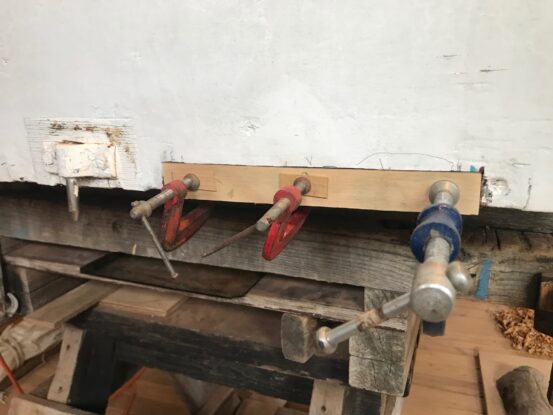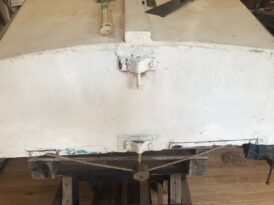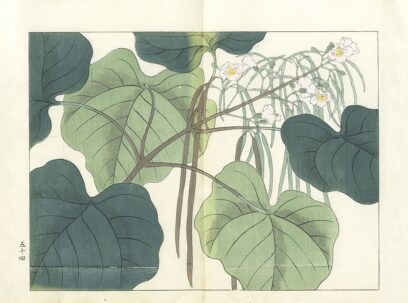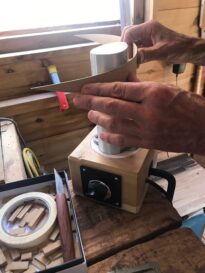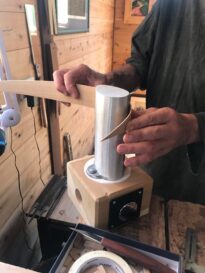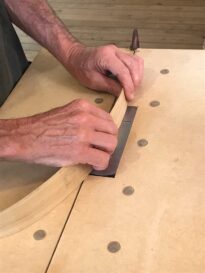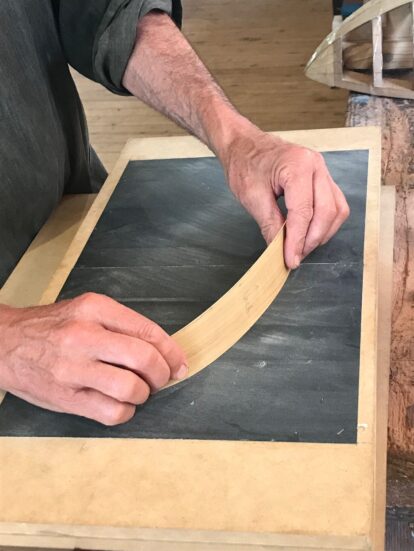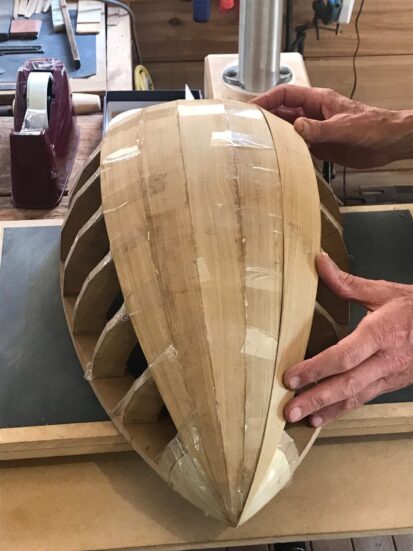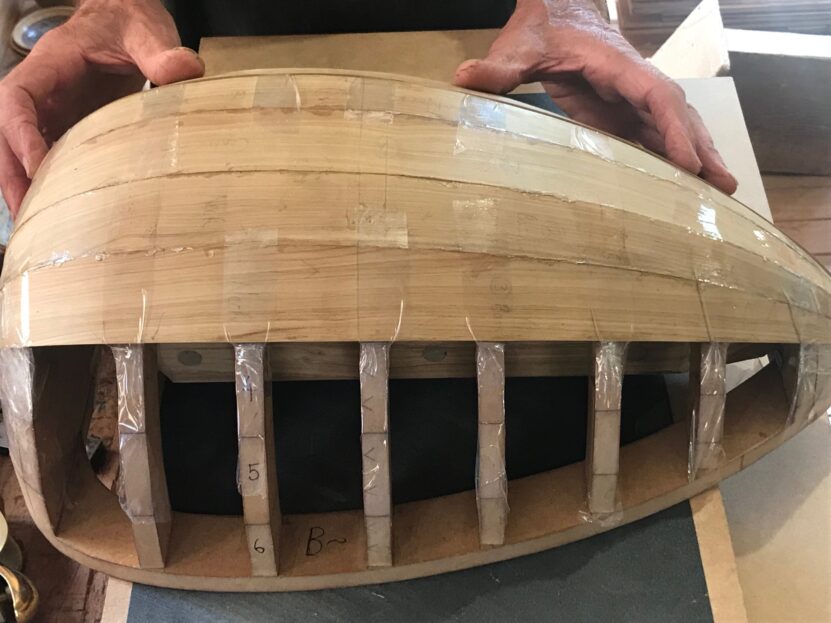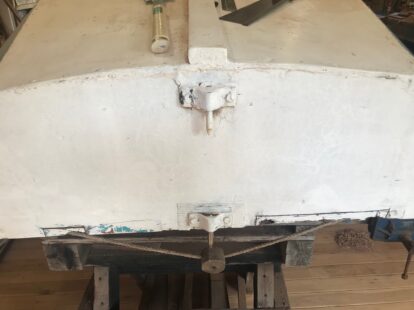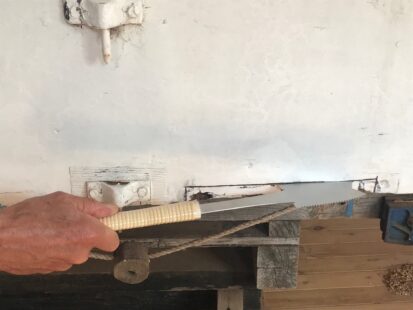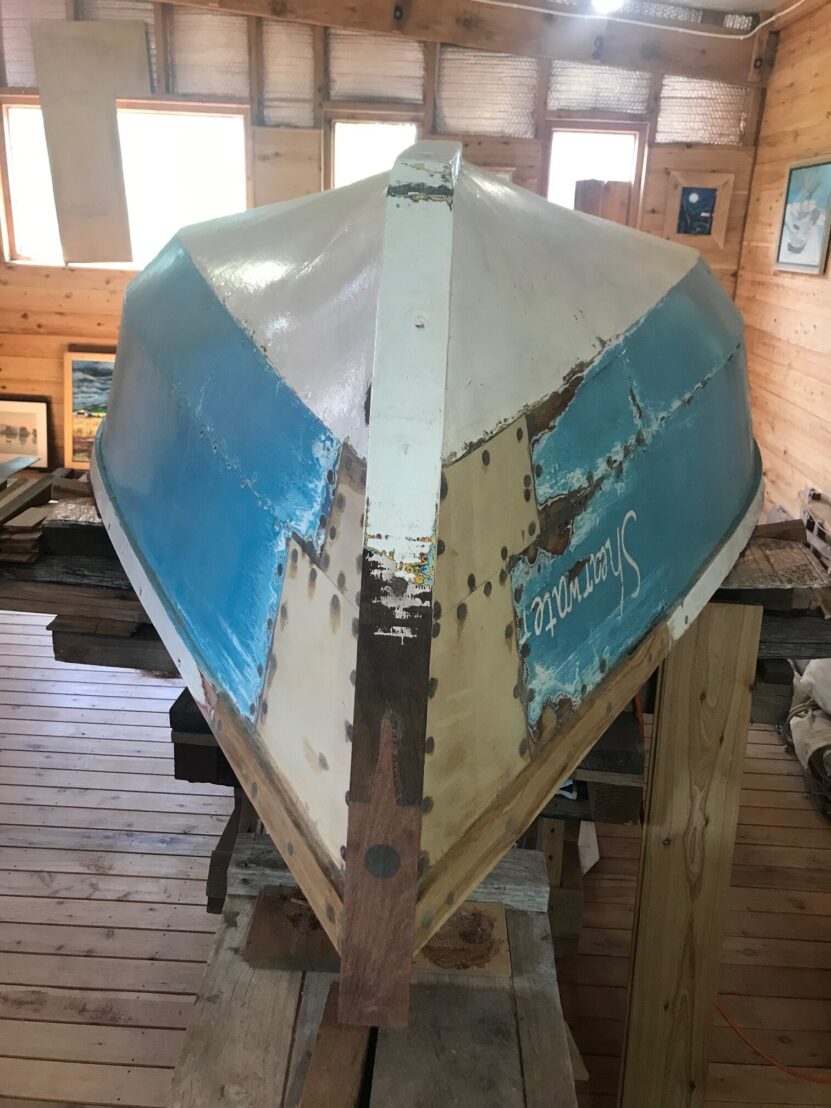Done.
As far as any small boat can be watertight, Shearwater is now watertight….
Next task: repairing our new mainsail, which has been damaged by an enterprising rat. He, or she, gnawed three almost perfectly circular holes in the lower fabric. I suppose that is one interpretation of the nautical phrase – shortening sail.
Our last voyage in the Bay was long ago (around 2007). Almost time to get out the beach rollers, and return Shearwater to her native element.
